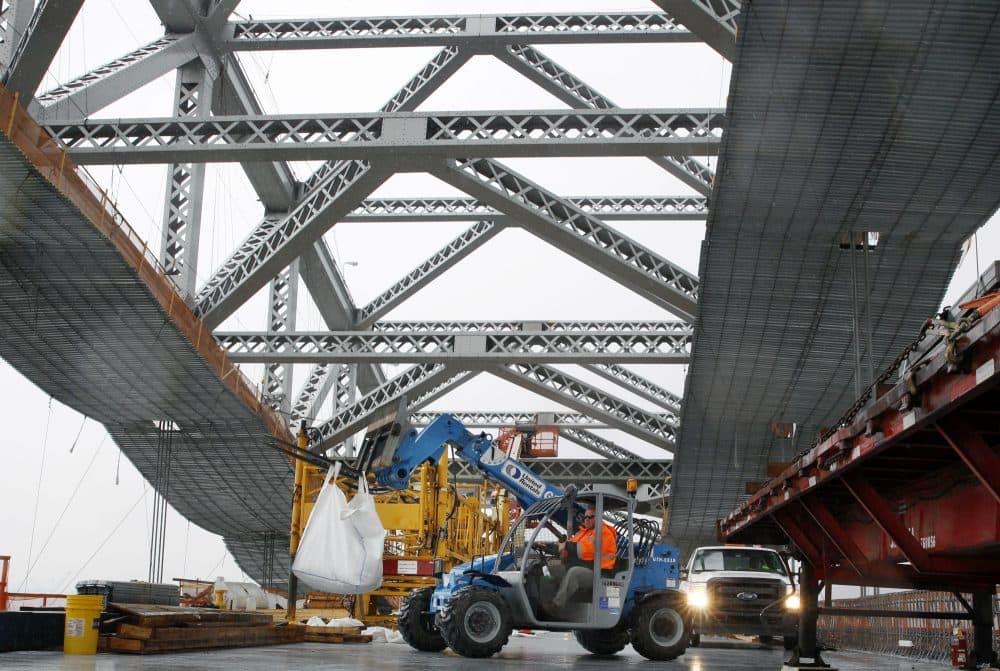Advertisement
Private Funds Vs. Public Dollars: Who Pays, Who Profits From Rebuilding America's Infrastructure

COMMENTARY
Infrastructure is a word we’ll frequently hear in 2017. The platforms of both presidential candidates included plans to spend hundreds of billions on infrastructure. And since the election, when prominent Democrats have been asked where they might find common ground with the incoming administration, the most common answer is a major infrastructure bill. Whether that common ground proves solid depends on Donald Trump's ability to convince Democrats that his unconventional ideas about infrastructure funding are sound.
The word is vague enough to be applied loosely across a spectrum of large-scale projects. A lot of the work is in the transportation sector, as evidenced by President-elect Trump's familiar lament about “our crumbling roads and bridges.” Besides repairing all the degraded roadways, our transportation priorities include expanding mass transit, improving rail systems, modernizing airports, revamping shipping ports and building more bicycle and pedestrian paths. And beyond transportation, other potential targets of federal grants and loans might include oil and natural gas pipelines, power grids, public water and sewer systems, and dams and levees.
The infrastructure funding proposal floated by members of the Trump transition team... does nothing to foster wise public policy or to promote social justice.
Yet, out of the myriad projects on drawing boards across the nation, only a select subset will catch the wave of federal dollars unleashed by an infrastructure bill, and those projects won’t necessarily be the ones that are the most needed or the most beneficial in the long term. The infrastructure funding proposal floated by members of the Trump transition team focuses on incentives for leveraging private capital and does nothing to foster wise public policy or to promote social justice.
The projects most deserving of federal funds are those that favor the least well-off communities, beyond the initial economic stimulus that construction jobs spur. At the front of the queue should be the regions where the economy is stubbornly sluggish and the public infrastructure most decrepit. For example, there is an urgent need for an extensive new system of levees along the Mississippi River between New Orleans and Baton Rouge. Heading off another crisis like the water supply disaster in Flint would be a wise use of infrastructure dollars.
Combining forward-looking urban planning with infrastructure spending delivers social dividends in addition to the primary transportation benefits. Boston has an initiative to develop infrastructure that can meet the mobility needs of all residents and eliminate transit deserts, giving disadvantaged neighborhoods access to jobs and services. On an even bigger scale, there’s the visionary North-South Rail Link project that would connect the city’s disjointed commuter rail lines and the MBTA to form an integrated regional rail system. The rail link is a grand, transformative, climate-friendly idea that’s been talked about for a long time. As always, the question is how to fund it.
Ordinarily, governments finance major infrastructure projects with bonds, and because interest rates are historically low now, some economists have suggested that now is the time to borrow and build. But the president-elect proposes to finance infrastructure projects using public-private partnerships, which are intended to limit increases to the debt burden on the public sector.
The draft plan that circulated during the campaign would subsidize private investors by issuing mammoth tax credits amounting to more than 80 percent of their equity in qualifying projects. The controversial sales pitch is that the economic stimulus stemming from infrastructure spending will generate tax receipts to the government that offset the cost of the tax credits. Investors would then reap the revenue stream a project produces after it’s been built. That allows them to pay off the debt on the money they borrow, and, ultimately, to turn a profit.
The interesting variable in the equation is a project’s revenue stream. Highways, bridges and tunnels that collect tolls work very well in this model because investors can glean a reliable income for decades after construction.
...the projects that get built through the Trump infrastructure plan will be the ones that promise their investors the best return on the dollar.
So the projects that get built through the Trump infrastructure plan will be the ones that promise their investors the best return on the dollar. But when assets like roads and bridges are privately controlled, private and public objectives may diverge. Take the case of privately backed high-occupancy toll lanes built next to existing highways to ease congestion, an approach that has been introduced in several places around the country. The idea is that the additional travel lanes are available to carpools for free and to all other drivers for a fee. But this kind of expansion culminates in still more cars on the road, and the highway’s backers maximize their profit by discouraging carpools.
Infrastructure projects that advance smart public policy but lack a future revenue stream would be far less likely to see funding under the Trump scheme. Consider, for example, the recent report on climate change adaptation for Boston. The harbor will need a coastal protection system consisting of gates and seawalls, at a cost of many billions. That kind of infrastructure is impossible to monetize.
For critical infrastructure projects, the nation should still rely on direct funding and good old-fashioned government bonds. Although there is a role for the private sector in financing some infrastructure projects, profit-driven management may be at odds with the public interest. Privatizing public goods is an expedient but often shortsighted policy.
